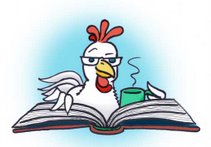| Similar Thing | Counting on Grace | Bread & Roses, Too |
| Heroine | Grace: restless, fiery, second-best reader in class | Rosa: responsible, anxious, best student in class |
| Significant Boy | Arthur: best reader in class and closet labor agitator | Jake: mill worker, street kid, and inadvertent strike evacuee |
| Colorful Immigrant Ethnicity | French-Canadian-American | Italian-American |
| Shoes | Doesn’t have her own pair, so she goes to work as a doffer | Falling apart, so she tries to hide them in a garbage heap |
| Mother | Fastest spinner in the mill; hates labor activists; something of a terror | Big-hearted striker; hates the bosses; something of a stereotype |
| Father | Kind of a nonentity compared to Mamere, but comes through in the end | Dead |
| Big Sister | Delia: Never liked school; works at Mamere’s side at the mill | Anna: Never cared for school; Works at Mama’s side at the mill and on strike |
| Ruthless Capitalist | Unidentified cotton mill owners | Billy Wood, big boss of the American Woolen Company |
| Capitalist Stooge | French Johnny, overseer | Miss Finch, schoolteacher |
| Vermont Connection | Everyone lives there | Kids of strikers sent there from Lawrence, MA for the duration |
| Actual historical event | Lewis Hine’s subversive documentary photographs | The “Bread and Roses” strike of 1912 |
| Related historical artifact that gives me goosebumps | Wrenching and beautiful cover photo of child mill worker who for some reason reminds me of my kid | “Bread and Roses” song that was for some reason the unofficial anthem of my undergraduate alma mater |
| Real-life labor hero | Lewis Hine | Joseph Ettor, Elizabeth Gurley Flynn, Big Bill Haywood |
| Teacher | Heartbroken that kids have to leave school for the dangerous mills; sticks her neck out for the workers | Heartbroken that kids are misled by dangerous and wicked labor agitators; pawn of the patriarchy |
| Death | Grace's kindly grandfather | Jake’s abusive dad |
| Change of Heart | Mamere allows that reading might be valuable | Miss Finch allows that kids might be hungry |
They’re both well-written, solid books, though I ended up liking Counting on Grace better: the characters felt more fleshed-out, and the plot was less sprawly. Bread and Roses, Too is written on a grander scale and spreads out its focus somewhat.
Plus I just loved that Grace. She jumped right off the page.

4 comments:
I was named after Elizabeth Gurley Flynn.
bookbk! You've won! Go check out www.threesillychicks.com!
I liked Counting on Grace better too. I never warmed up the characters in Bread and Roses, Too. But I really felt for the characters in Grace. I thought it was especially interesting how her parents conflict in needing the money from her working and wanting her life to be better.
Thanks for visiting, MR. I liked how the parents were drawn, too; it's tough to depict a mother who's that fierce and prickly and opposed to the side we're all set up to root for (i.e. labor reformers and Grace's teacher) and not make her unlikeable, but Winthrop manages.
Post a Comment